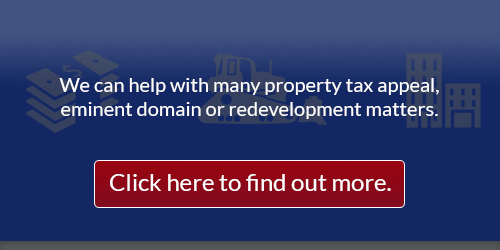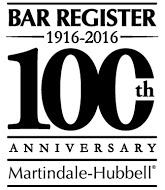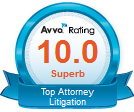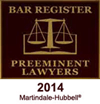Can The Government Use Eminent Domain To Take Property Already Devoted To A Public Use?
The Fifth Amendment of the U.S. Constitution allows the government to take private property if the land is being put towards a public use, and so long as the landowner is paid just compensation. Despite controversial court decisions, such as Kelo v. City of New London, 545 U.S. 469 (2005), the requirement that condemned land is put to a public use balances government power and public benefit. However, if a property being condemned is already devoted to a public purpose, the government must determine which use is more necessary to the public benefit. The prior public use doctrine was recognized by New Jersey courts before the adoption of the New Jersey Eminent Domain Act of 1971, which authorizes the condemnation of property, even public property. N.J.S.A. 20:3-6. The Act specifically applies to the acquisition of any property by a condemnor, “including public property already devoted to public purpose.” Id. (emphasis added). Thus, the New Jersey Eminent Domain Act includes an express statutory provision authorizing the condemnation of public property already dedicated to a public purpose.
The prior public use doctrine protects land with a public purpose from condemnation if the proposed use will destroy or interfere with the existing use, unless the legislature authorizes the taking by necessary implication. The condemning authority carries the burden of demonstrating that its proposed use of the property is more necessary and inconsistent with the prior use of the property. Because taking public property may reduce or eliminate the prior public use, reviewing courts must balance the uses of the property to determine which is the more necessary public use.
The Definition of Public Use
The definition of “public use” has been interpreted differently by the courts. A court’s determination of whether a property is being used publicly or simply being used is essential to the prior public use doctrine. A decision by the Supreme Court of Vermont in Vermont Hydro-Electric v. Dunn, 112 A. 223 (Vt. 1921) has held significant weight. The court held that when determining if land is exempt from condemnation due to a prior public purpose, the judgment should be based on what the landowner is required to do with the land by law rather than the landowner’s actual use of the land. Vermont Hydro-Electric, supra. The assumption by a property owner that their land is benefiting the public is not enough to constitute a public use.
Necessary Implication Clause
If a municipality decides that the taking of land devoted to public use is necessary, the taking can be permitted by the necessary implication clause. The degree of necessity required for this clause is debated, and a unique stance was adopted by the New Jersey Supreme Court in Township of Weehawken v. Erie Railroad, 20 N.J. 572 (1956). In this case, the Court allowed Weehawken to condemn parcels owned by the railroad company because Weehawken had the power to construct facilities that it believed would be beneficial to the public. Weehawken, supra, 20 N.J. 572 at 586. Weehawken planned to build Little League fields and public parking facilities on the property owned by the railroad company, and the court held that the municipality has the power to commence a project it believes will benefit the people who are anticipated to use the property.
The holding in Weehawken that the condemnation projects where a proposed new use would destroy or impair an existing public use, unless the condemnor is given express power by the Legislature, has been cited in other cases in New Jersey. In Barnegat Light v. Board of Chosen Freeholders of Ocean County, 44 N.J. Super. 332 (Law Div. 1957), the Court held that this rule did not apply to the taking of a public road by a county, as the use of the road would not be destroyed but would remain the same. Board of Chosen Freeholders, supra, 44 N.J. Super. at 351.
Compatible Use Theory
If it is found that the planned use of public property will not remain the same after the taking, courts may turn to the compatible use theory. The compatible use theory permits the taking of public property if the new use of the property does not impair or interfere with the existing use. However, it does not consider inconveniences to prior use, just whether the two uses can stand together. This rule protects important prior public uses while providing courts with the flexibility to allow certain condemnation projects.
An example of the compatible use theory is seen in the court’s decision in Harrison County School Board v. State Highway Commission, 284 So. 2d 50 (Miss. 1973). In this case, a state transportation agency condemned school property to construct a highway. The taking area consisted of recreational land, and no school buildings were impacted. The court held that the taking would not materially impair the existing use by the school; therefore, it would not be detrimental to the public interest. In the court’s view, the construction of the highway and the daily activities of the school are compatible, so the taking of part of the school’s property by a superior government body was permitted. Harrison County School Bd., supra, 284 So.2d at 54.
Generally, the state has the power to condemn property devoted to a public use because it is the superior government body. In State Highway Commission v. City of Elizabeth, 102 N.J. Eq. 221 (Ch. 1928), it was held that the State Highway Commission had the power to take public property owned by the City of Elizabeth. Elizabeth, supra, at 223, 224. In this case, the State Highway Commission was attempting to stop the City of Elizabeth from interfering with the construction of a highway through the City. The City claimed that the land being taken for the highway was protected from condemnation by the prior public use doctrine since it was owned by the municipality. The court concluded that the rights and powers of a municipality are derived from the state. Therefore, all property held by the municipality is subject to condemnation by the state and its agencies, even if the property has a prior public use. Elizabeth, supra, 102 N.J. Eq. at 227. The doctrine of prior public use is applicable between entities that both possess the power of eminent domain deriving from the state, but it does not apply to the state and its political subdivisions. The state is the sovereign power, and the public benefit of a statewide highway system comes before the public property of a municipality.
Legislative Intent
Another prominent case in New Jersey, Texas Eastern Transmission Corp. v. Wildlife Preserves, Inc., 48 N.J. 261 (1966), is an example of express legislative intent as an exception to the public use doctrine. The Defendant, a wildlife preserve, was a private entity with a public-spirited mission of conservation. Defendant did not possess its land through eminent domain; therefore, it had no federal or state power to acquire the land. The Court held that the Natural Gas Act, which gives gas companies the power of eminent domain for pipeline installations, applied to Texas Eastern as their acquisition of the land was a paramount public purpose. Wildlife Preserves, supra, 48 N.J. at 266. Further, it was held that Plaintiff’s acquisition of the land represented a constitutional exercise of the Congressional power to regulate interstate commerce, rendering the purpose of the Plaintiff paramount. Id. The Court also recognized that Wildlife Preserves’ use of its property can and would be a legitimate public purpose if it were employed by the state or another authorized agency. The ownership of the land by a private entity rendered its purpose subordinate to that of the Plaintiff, which possessed statutory justification to acquire the land through the regulation of interstate commerce. Wildlife Preserves, supra, 48 N.J. at 267. However, the Court recognized that the preserve was entitled to a plenary trial of its claim that the gas pipeline should be constructed on an alternate route that would not damage its land. Wildlife Preserves, supra, 48 N.J. at 276.
The Court’s decision in this case highlights the role of the legislature in designating the power of condemnation and the compatible use theory. The Court recognized that the wildlife preserve would serve a valid public purpose if given legislative authority, yet its lack thereof gave Texas Eastern the right to condemn the land. However, by acknowledging the right of the Defendant to challenge the route of the pipeline by trial, the Court also recognized that the condemnation of the preserve would interfere with its use of the property.
A significant more recent case addressing the prior public use doctrine since the adoption of the Eminent Domain Act is Norfolk Southern Ry. Co. v. Intermodal Properties, LLC, 215 N.J. 142 (2013). The Supreme Court’s discussion of the prior public use doctrine in Norfolk reaffirmed that the doctrine is still applicable in conjunction with the Eminent Domain Act. In Norfolk, Norfolk Southern instituted an action to take property owned by Intermodal for additional parking spaces near its railroad lines. The property owner objected to the takings because it proposed to use the property as a parking facility for the Secaucus Junction passenger rail station, thereby serving a greater public interest. The Norfolk Court rejected the property owner’s defense of the prior public use doctrine based on two factors. First, the property owner’s property at the time of taking was not being used for a public use. Despite the successful rezoning of the property, Intermodal’s proposed future was speculative and was more oriented toward a profit-making venture. Norfolk, supra, 215 N.J. at 164. Second, the court held that the prior public use doctrine would only apply if the property owner itself had the power of eminent domain. The prior public use doctrine arose in the context of disputes over land between two entities, each of which had condemnation power. Thus, the doctrine is not invoked automatically simply because the property is already being used for a public purpose. As aforementioned, the Court in Wildlife Preserves recognized that the use of the preserve did provide public benefit. Wildlife Preserves, supra, 48 N.J. at 268. However, the owner of the land lacked the same condemnation power that Texas Eastern possesses. The holding in Norfolk affirmed the holding in Wildlife Preserves, as it was held that the property owner that devotes its property to a worthy public purpose must also have the power to condemn to avail itself of its protections of the prior public use doctrine. Norfolk, supra, 215 N.J. at 163.
Current Issues in New Jersey
Currently, a family farm in Cranbury, New Jersey, may be seized by eminent domain for the construction of an affordable housing project. Andy Henry, the owner of the farm, received an appraisal notice from the township for his property earlier this summer. Henry’s great-grandparents purchased the property in 1850. A municipal official claimed that the goal of the acquisition is to create an inclusive community through the construction of affordable housing. The farm is in an industrial zone, and some opponents of the affordable housing project believe the location is not suitable for affordable housing. Opponents of the project have also stressed the historical importance of the farm, a factor in the balancing test carried out by the courts. As national attention is brought to the case, courts will have to balance the significance of the farm to New Jersey residents with the benefits of an affordable housing project.
For over 55 years, McKirdy, Riskin, Olson & DellaPelle, P.C. has concentrated its practice in this special area of the law and has earned a reputation for persistently defending its clients’ constitutionally-recognized property rights. If you are confronted with the threat of eminent domain, please feel free to contact us for a free consultation.
The author acknowledges the assistance of Alexandra Schraufnagl, a summer intern at McKirdy, Riskin, Olson & DellaPelle, in preparing this article. Ms. Schraufnagl is a member of the Class of 2027 at Providence College.







